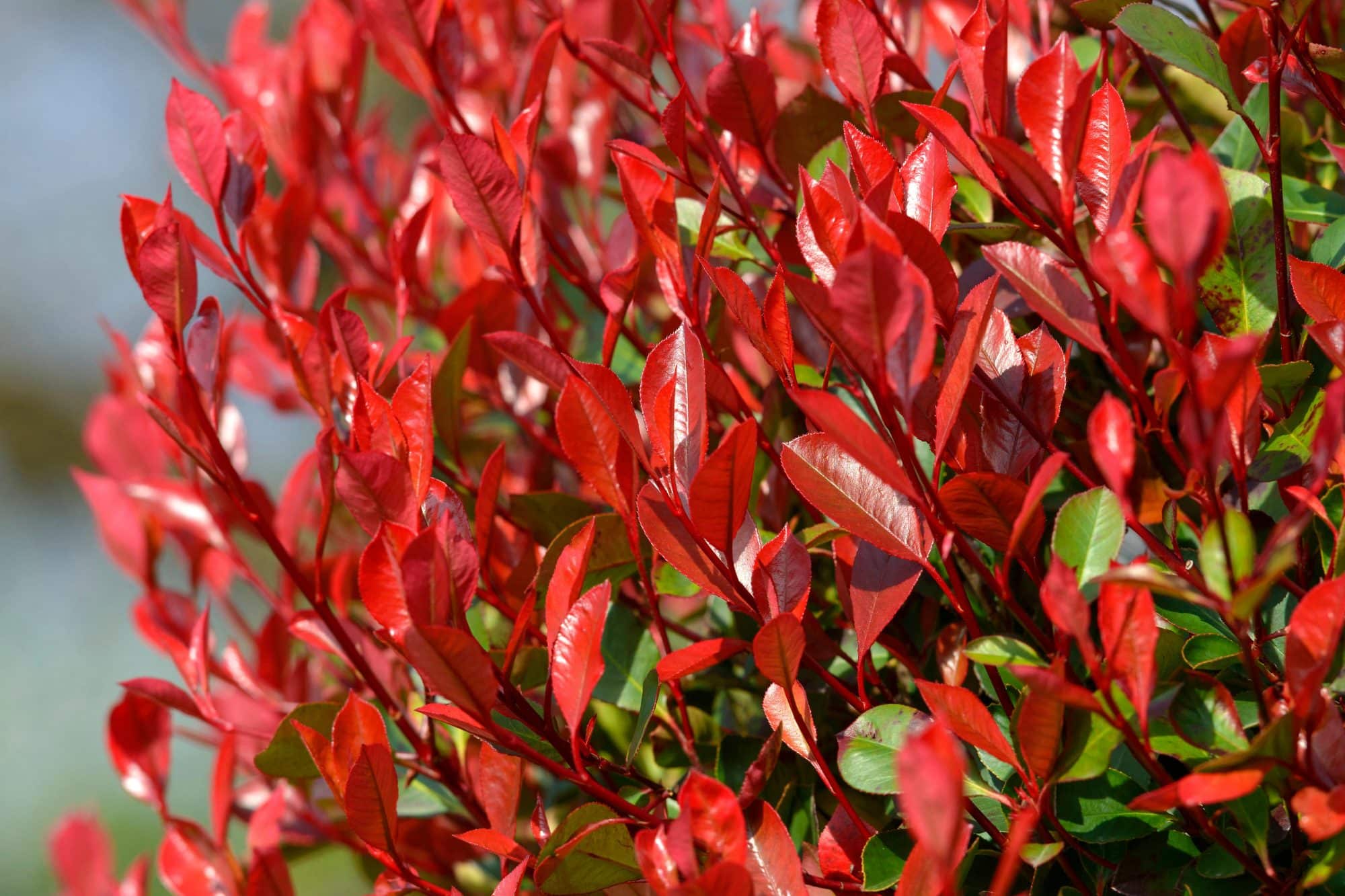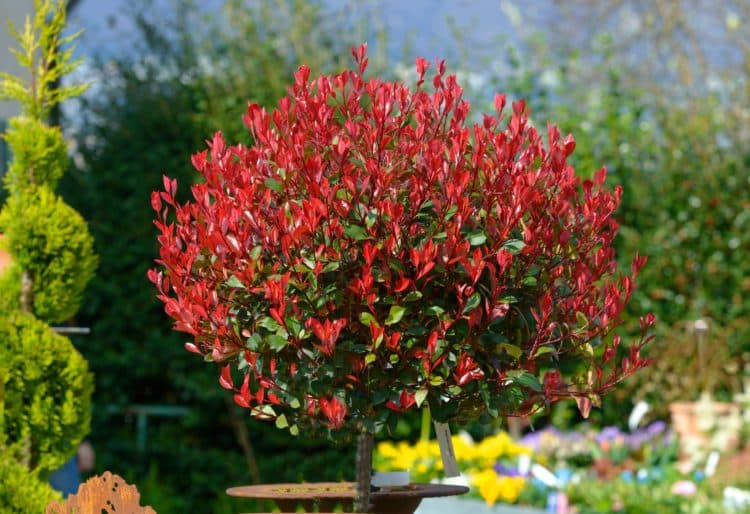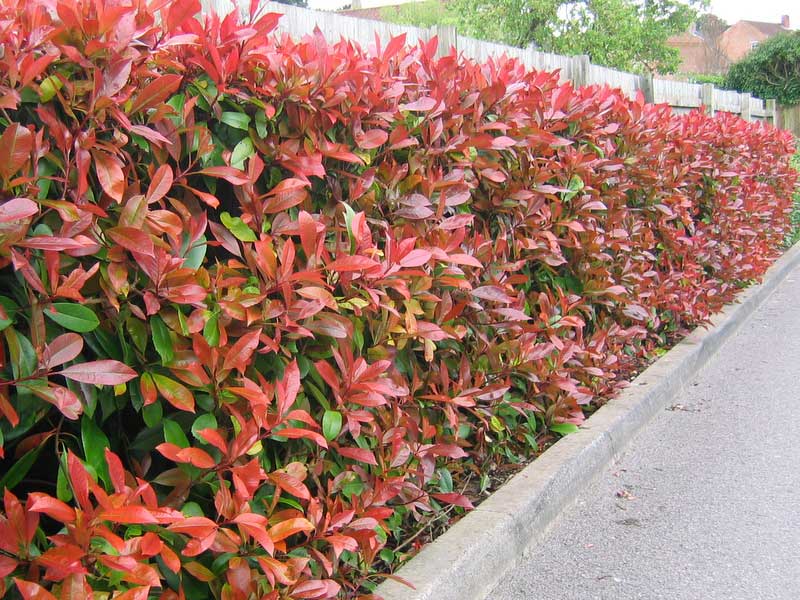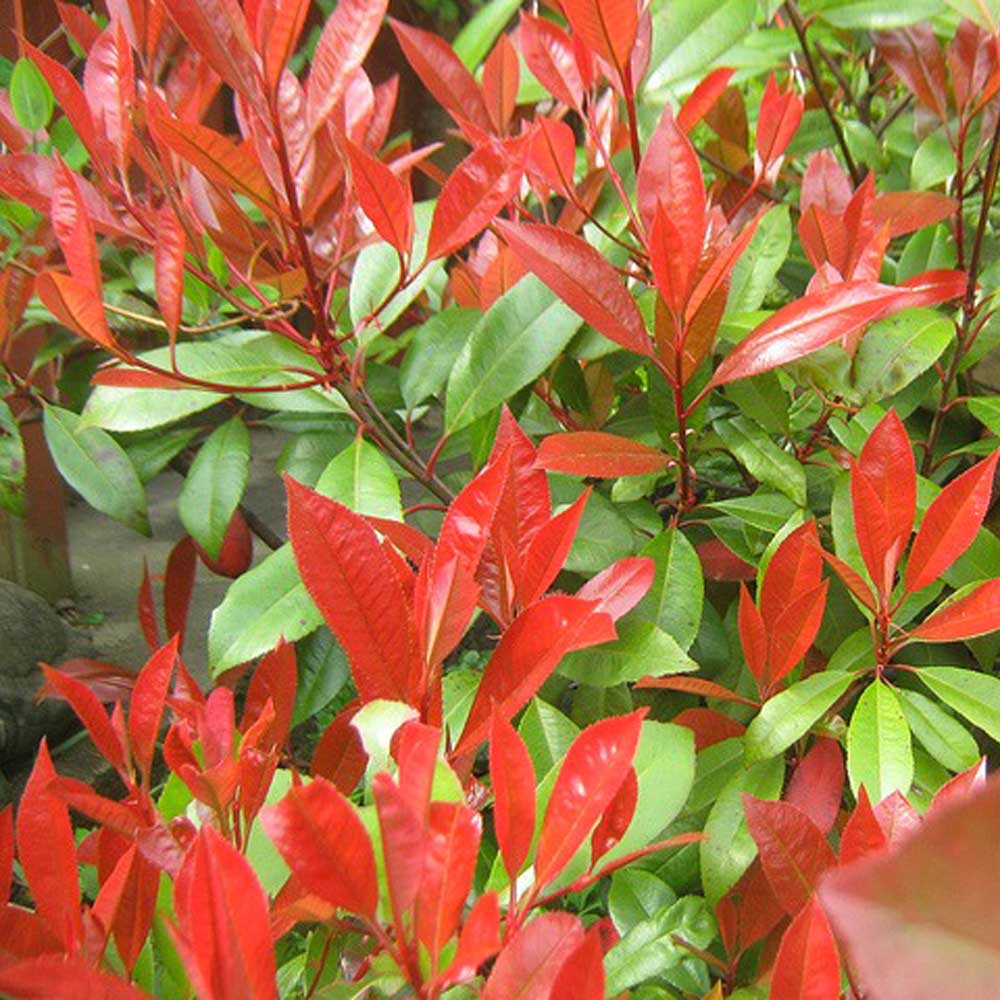
Photinia Red Robin hedge, plants available from Photinia red robin
Powdery mildew is a fungal disease that manifests as white, powdery patches on the leaves and stems of Photinia Red Robin. If left untreated, the infection can spread to more leaves, fruit, and even small twiggy growth, causing significant damage to the plant. To address powdery mildew, apply fungicides such as sulfur, neem oil, or potassium.

Buy Photinia Red Robin shrubs and hedging Delivery by Charellagardens
Hardiness: USDA Z4-10 (UK H6) Rate of growth: 1-2ft (30-60cm) per year Height after ten years: 12-15ft (3.5-4.5m) If you're searching for a fast growing, low maintenance shrub, add this attractive.

Buy Photinia Red Robin Hedge J Parker Dutch Bulbs
Photinia x fraseri' Red Robin': Red Robin is the most commonly planted cultivar. It grows 9 to 12 feet tall with a similar spread. It's a somewhat compact cultivar that is easy to tame for use in hedges. Photinia × fraseri' Little Red Robin': This plant is similar to Red Robin though much smaller, with a height and spread of only 2 to 3 feet.

I replanted some of the Photinia "Red Robin" from my show garden in 2006 for a hedge on a busy
Photinia is great for evergreen hedges. Long-lasting leaves and fast growth rate mean privacy is guaranteed within a few years. For a more ornamental impact, alternate photinia with other beautiful evergreen shrubs: Abelia, Forsythia, silverberry and the occasional laurel tree. For a 6-foot hedge (1.8m), plant each photinia 3 feet (1m) from the next.

10 X Photinia Red Robin Hedging Plants 2540cm Everygreen Shrubs by Sunnyside Nurseries Amazon
tie the shoot tip to a wooden stick. Photinia Fraseri 'Red Robin'. While the mother plant continues to supply the layer with nutrients, keep the soil slightly moist. During winter, cover the bed with a layer of foliage or brushwood. By the next spring, the shoot will have grown its own root system.

25 Photinia Red Robin Hedging Plants 2540cm Big Pots Evergreen shrubs by Sunnyside Nurseries
Here is johnyboy on the daily grind demonstrating how to plant a lovely Photinia Red Robin Hedge with a perfect parallel finish. For more information on any.

Buy Photinia Little Red Robin Christmas Berry & Red Tip Photinia Hedges
Photinia Red Robin Hedges grow at around 30cm per year. This allows for some trimming of the annual growth to maintain the density and shape. A full size Photinia can to over 4 metres high by over 3 metres in width. Be sure space your hedging plants a the recommended spacing for optimal establishment of your new hedge.

Red Robin Hedging Plants 2040cm Photinia Christmas Berry Evergreen Hedge Potted eBay
Does Photinia make a good hedge. Yes, Photinia Red Robin can make a very good hedge under the right conditions. Photinia is a genus of evergreen shrubs that are known for their vibrant foliage and dense growth habit, making them popular choices for colourful hedges and screens. Here are some reasons why Photinia can be a good hedge plant:

Photinia Red Robin Topairy & Hedging Plants
Let's find out how to grow the hybrid Photinia red robin and get that vibrant hedge.. If you are planning to plant a Photinia Red Robin hedge, how far apart do the individual shrubs need to be? You'll need to space the plants roughly 75cm apart. If there is a wall or fence involved, plant the shrub about 60cm away from it.

Photinia Red Robin 10" Pot Hello Hello Plants & Garden Supplies
The Photinia Red Robin is a hardy plant, hence it can survive in tough environments and will grow in most parts of the UK.. If you are using these plants for hedging, spacing is important to ensure effective ventilation; therefore, place them at least 60cm apart from the wall and space them 60cm apart as well. Read next: Growing delphiniums.

Red Robin Hedging Plants 2040cm Photinia Christmas Berry Evergreen Hedge Potted eBay
Photinia Red Robin Hedge Photinia x fraseri 'Red Robin'. From: £4.99 Photinia 'Red Robin' (Photinia x fraseri 'Red Robin') is a stunning evergreen hedge that boasts red, glossy leaves in the spring and summer, before maturing to lush dark green foliage. Click here for more information. Planting Conditions: Suitable for normal, clay or.

Hedging Greenshutters Garden Centre
The best place to grow red tip photinia is in a spot that receives full sunlight to partial shade. This plant is tolerant of most soil types, but the soil does need to be well-draining. Fertile loam or light soil with a low clay content is best. If your soil is extremely heavy, amend it with some sand before planting.

Photinia fraseri Red Robin Hedge Plants For Sale Evergreen Hedging
How to grow photinia. Photinias are low-maintenance shrubs or small trees, many of which have colourful foliage displays in spring/summer or autumn. They also produce clusters of small white flowers, followed by red berries. The most popular cultivar, Photinia x fraseri 'Red Robin', is prized for its striking ruby-red new foliage.

Photinia Red Robin Hedge Plants Photinia x fraseri Red Robin
Photinia 'Red Robin' will grow best in full sun or partial shade, but in fact, it can survive in a bed with any aspect in your garden - be it south, east, west or north-facing - as long as it is not in deep shade.. If you wish to make a hedge of 'Red Robin', the plants are usually placed at a spacing of 75cm.

10 Photinia Red Robin Hedging Plants 2530cm Bushy Evergreen Hedge Shrubs on OnBuy
The photinia red robin is a popular hedge plant. It's easy to grow and maintain, as well as compact enough for border hedges. Learn about the photinia red robin below. Order online . Call us today - 01460 281 265. Or email us - [email protected]. Inc. VAT. Swicth Tax. Ex. VAT. Search. Search. Close this search box..

Photinia 'Little Red Robin' Dwarf Photinia Hedges Direct
Photinia red robin hedge is a popular choice for hedges and privacy screens. It is a fast-growing, evergreen shrub that can reach up to 6 feet tall and 8 feet wide. The glossy, dark green leaves of photinia red robin hedge are its most distinctive feature. In the spring, the shrub is covered in clusters of small, white flowers that give way to bright red berries.